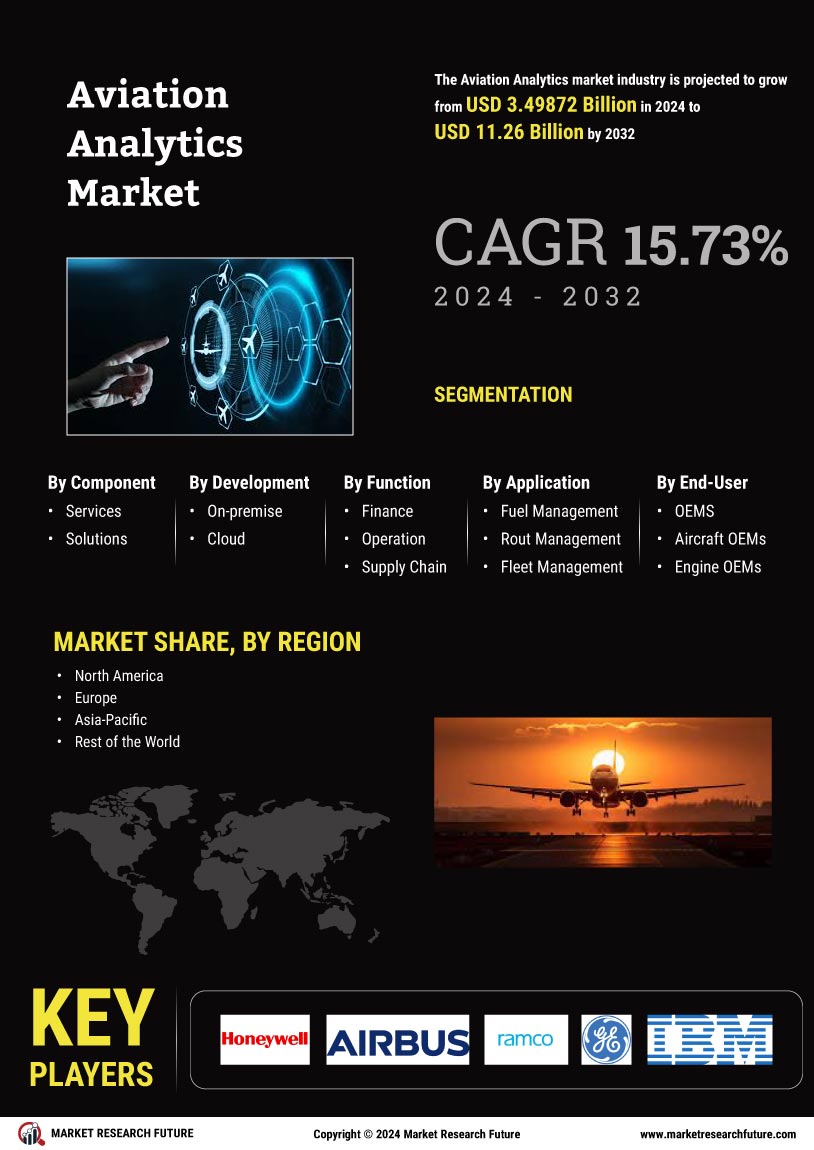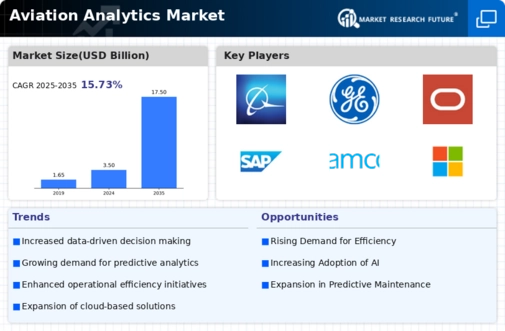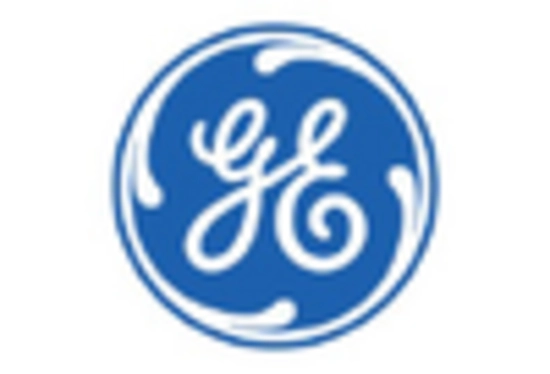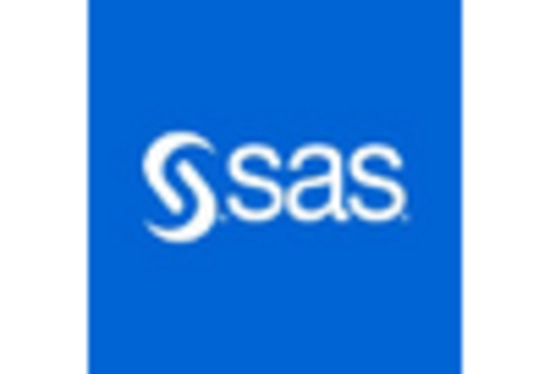Increased Demand for Operational Efficiency
The Aviation Analytics Market is experiencing a surge in demand for operational efficiency as airlines and airports seek to optimize their operations. This demand is driven by the need to reduce costs and improve service delivery. According to recent data, airlines that implement analytics solutions can achieve up to a 15% reduction in operational costs. The focus on efficiency is not only about cost savings but also about enhancing customer satisfaction through improved flight schedules and reduced delays. As competition intensifies, stakeholders in the Aviation Analytics Market are increasingly investing in data-driven solutions to streamline processes and enhance decision-making capabilities. This trend indicates a robust growth trajectory for analytics solutions that can provide actionable insights into operational performance.
Advancements in Data Integration Technologies
The Aviation Analytics Market is benefiting from advancements in data integration technologies, which facilitate the seamless aggregation of data from various sources. These technologies enable airlines and airports to consolidate operational, financial, and customer data into a unified platform for analysis. The ability to integrate disparate data sources enhances the accuracy and reliability of analytics insights, leading to more informed decision-making. As organizations increasingly recognize the value of comprehensive data analysis, the demand for sophisticated data integration solutions is expected to rise. This trend is indicative of a broader movement towards data-centric strategies within the Aviation Analytics Market, where integrated analytics play a pivotal role in driving operational success.
Emergence of Predictive Maintenance Solutions
The Aviation Analytics Market is witnessing a notable shift towards predictive maintenance solutions, which leverage data analytics to forecast equipment failures before they occur. This proactive approach not only minimizes downtime but also extends the lifespan of aircraft components. Data suggests that predictive maintenance can reduce maintenance costs by up to 30%, making it an attractive proposition for airlines. As the aviation sector continues to embrace technology, the demand for advanced analytics tools that facilitate predictive maintenance is likely to grow. This trend underscores the importance of data-driven decision-making in enhancing operational reliability and efficiency within the Aviation Analytics Market.
Regulatory Compliance and Safety Enhancements
Regulatory compliance remains a critical driver in the Aviation Analytics Market, as stakeholders must adhere to stringent safety and operational regulations. The aviation sector is subject to various international and national regulations that mandate the use of data analytics for safety management systems. Analytics tools enable airlines and airports to monitor compliance in real-time, thereby reducing the risk of violations and enhancing safety protocols. The market for aviation analytics is projected to grow as organizations increasingly recognize the importance of data in meeting regulatory requirements. Furthermore, the integration of analytics into safety management systems can lead to a reduction in incidents, thereby fostering a culture of safety within the Aviation Analytics Market.
Growing Importance of Customer Experience Analytics
In the Aviation Analytics Market, there is an increasing emphasis on customer experience analytics as airlines strive to enhance passenger satisfaction. By analyzing customer data, airlines can tailor their services to meet the evolving preferences of travelers. This includes personalized marketing, improved in-flight services, and streamlined booking processes. Research indicates that airlines that effectively utilize customer analytics can see a significant increase in customer loyalty and revenue. As competition in the aviation sector intensifies, the ability to leverage data for enhancing customer experience will likely become a key differentiator. This trend highlights the critical role of analytics in shaping the future of service delivery in the Aviation Analytics Market.

















Leave a Comment